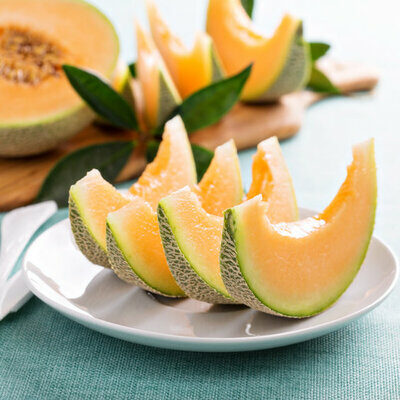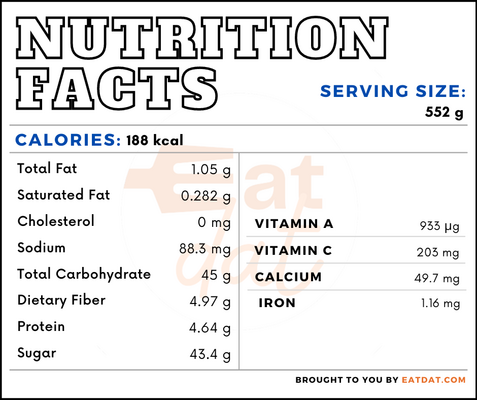
Cantaloupe
What is a Cantaloupe?
Cantaloupe is a type of melon that belongs to the Cucumis melo family, the same family as the honeydew melon. Its name comes from the Italian Cantalupo di Sabina, a town in which the fruit was first introduced into Western Europe from Armenia. This melon has an inedible light greenish yellow skin and an edible orange flesh. The fruit is formed around a bunch of seeds, which are also shelled and consumed.
- A fully ripe cantaloupe is juicy and has a very sweet taste.
- These melons are great for consuming ripe, and can be used in fruit salads, desserts, and baked goods, as well as to accompany meats like dried Spanish ham.
The top 10 most popular melons are:
- Watermelon
- Cantaloupe
- Honeydew
- Winter Melon
- Casaba Melon
- Persian Melon
- Galia Melon
- Snap Melon
- Canary Melon
- Bitter Melon
Origin of cantaloupes
Muskmelons, including cantaloupe, originated in Persia (modern-day Iran), from where they spread to Afghanistan and India, and much later into China. Archaeological evidence points towards its cultivation around 2400 BC in Egypt, at the earliest. Additionally, ancient Romans were also familiar with this fruit. It was introduced into Europe in the 15th century and later into the Americas by Spanish conquistadors in the 16th century.
Nutrition
Nutritional profile for cantaloupe (1 medium sized, 552g):

Cantaloupe is rich in potassium, folate, vitamin C, vitamin A, carotene, and lutein + zeaxanthin. Also, it contains calcium, magnesium, phosphorous, sodium, fluoride, niacin, choline, carotene, cryptoxanthin, and vitamin K in decent quantities. Additionally, cantaloupes increase the bioavailability of β-carotene. Regular consumption can help in preventing hypothyroidism, cancers, diabetes, liver diseases, and ulcers. In additiona, this fruit has analgesic, anti-inflammatory, antioxidant, antimicrobial, and antiulcer properties.
Commercial production
China accounts for around 50 percent of the world’s cantaloupe production. Other main producers are Turkey, Iran, Egypt, India, Kazakhstan, the USA, Spain, Italy, and Guatemala. Cantaloupe production requires a warm climate and sandy loam soils with good drainage. These melons are hand harvested when they reach the ‘full-slip’ stage, and can be separated from the vine with the slightest pressure.
Cantaloupe recipes
This fruit may be eaten raw as well as in baked dishes, salads, and desserts. Also, they work well pickled or cooked into soups. Here are a few recipes to try:
FDA regulations
The FDA describes all fresh fruits, including cantaloupe melons, as raw agricultural commodities and strictly regulates all aspects of their growing, harvesting, packing, and storage. The USDA provides import restrictions and quality standards for the cantaloupe.
References
Sam Dean, The Etymology of the Word ‘Cantaloupe’, Bon Appétit, https://www.bonappetit.com/test-kitchen/ingredients/article/the-etymology-of-the-word-cantaloupe
Fleshman, Matthew K et al. “Carotene and novel apocarotenoid concentrations in orange-fleshed Cucumis melo melons: determinations of β-carotene bioaccessibility and bioavailability.” Journal of agricultural and food chemistry vol. 59,9 (2011): 4448-54. doi:10.1021/jf200416a, https://www.ncbi.nlm.nih.gov/pmc/articles/PMC3544477/
Vella, Filomena Monica et al. “Characterization of Polyphenolic Compounds in Cantaloupe Melon By-Products.” Foods (Basel, Switzerland) vol. 8,6 196. 6 Jun. 2019, doi:10.3390/foods8060196, https://www.ncbi.nlm.nih.gov/pmc/articles/PMC6617032/
